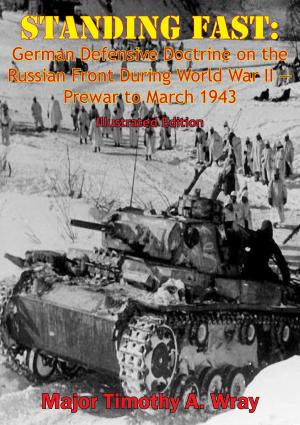In the Ypres Salient, The Story of a Fortnight’s Canadian Fighting, June 2-16 1916 [Illustrated Edition]
Nonfiction, History, Military, World War I, Germany, British| Author: | Beckles Willson | ISBN: | 9781782890638 |
| Publisher: | Verdun Press | Publication: | March 2, 2013 |
| Imprint: | Verdun Press | Language: | English |
| Author: | Beckles Willson |
| ISBN: | 9781782890638 |
| Publisher: | Verdun Press |
| Publication: | March 2, 2013 |
| Imprint: | Verdun Press |
| Language: | English |
Every evening since 1928, the Last Post is sounded in the town of Ypres in West Flanders, and the local fire brigade turn toward the Menin Gate as the local traffic stops. This Mark of respect to the Allied soldiers who fell defending the Ypres salient has been a tradition in the town for almost one hundred years. Tens of thousands of British, French, Canadian, Australian, Indian, New Zealand, South African and other Dominion troops came, fought and died to hold this little outpost of Belgium during the First World War.
To comprehend and record the scale of the actions, battles and, most importantly, the human sacrifice of the four years of war, it is necessary to look at limited periods of the fighting. The author has picked one of the earliest baptisms of fire for the Canadian troops, the battle of Mount Sorrel in 1916. The Canadian Corps under Byng was holding the wooded ground south-east of Ypres town, including the important observation post Hill 62. Across the muddy front line, the German XIII Württemburg Corps was carefully planning an attack stiffened with much extra heavy artillery and trench mortars. On the 2nd of June, the German artillery shattered the morning’s peace, and heavy, savage fighting began only to cease on the 13th. The Battle was in the balance until the second and final counter attack by the Canadians on the 11th, as one Historian puts it: “A combination of excellent staff work and planning, brilliantly executed artillery work in poor weather and the formidable courage of the Canadian infantry, had saved the day.”—Chris Baker.
Author — Willson, Beckles, 1869-1942.
Text taken, whole and complete, from the edition published in London, Simpkin, Marshall, Hamilton, Kent & co. ltd., 1916.
Original Page Count – 251 pages.
Illustrations — 7 illustrations and maps.
Every evening since 1928, the Last Post is sounded in the town of Ypres in West Flanders, and the local fire brigade turn toward the Menin Gate as the local traffic stops. This Mark of respect to the Allied soldiers who fell defending the Ypres salient has been a tradition in the town for almost one hundred years. Tens of thousands of British, French, Canadian, Australian, Indian, New Zealand, South African and other Dominion troops came, fought and died to hold this little outpost of Belgium during the First World War.
To comprehend and record the scale of the actions, battles and, most importantly, the human sacrifice of the four years of war, it is necessary to look at limited periods of the fighting. The author has picked one of the earliest baptisms of fire for the Canadian troops, the battle of Mount Sorrel in 1916. The Canadian Corps under Byng was holding the wooded ground south-east of Ypres town, including the important observation post Hill 62. Across the muddy front line, the German XIII Württemburg Corps was carefully planning an attack stiffened with much extra heavy artillery and trench mortars. On the 2nd of June, the German artillery shattered the morning’s peace, and heavy, savage fighting began only to cease on the 13th. The Battle was in the balance until the second and final counter attack by the Canadians on the 11th, as one Historian puts it: “A combination of excellent staff work and planning, brilliantly executed artillery work in poor weather and the formidable courage of the Canadian infantry, had saved the day.”—Chris Baker.
Author — Willson, Beckles, 1869-1942.
Text taken, whole and complete, from the edition published in London, Simpkin, Marshall, Hamilton, Kent & co. ltd., 1916.
Original Page Count – 251 pages.
Illustrations — 7 illustrations and maps.
![Cover of the book In the Ypres Salient, The Story of a Fortnight’s Canadian Fighting, June 2-16 1916 [Illustrated Edition] by Beckles Willson, Verdun Press](https://www.kuoky.com/images/2013/march/500x500/9781782890638-oq1X_500x.jpg)






![Cover of the book Marines In World War II - The Battle For Tarawa [Illustrated Edition] by Beckles Willson](https://www.kuoky.com/images/2014/august/300x300/9781782892779-O9WM_300x.jpg)



![Cover of the book German Northern Theater of Operations 1940-1945 [Illustrated Edition] by Beckles Willson](https://www.kuoky.com/images/2015/november/300x300/9781782899778-wjod_300x.jpg)



